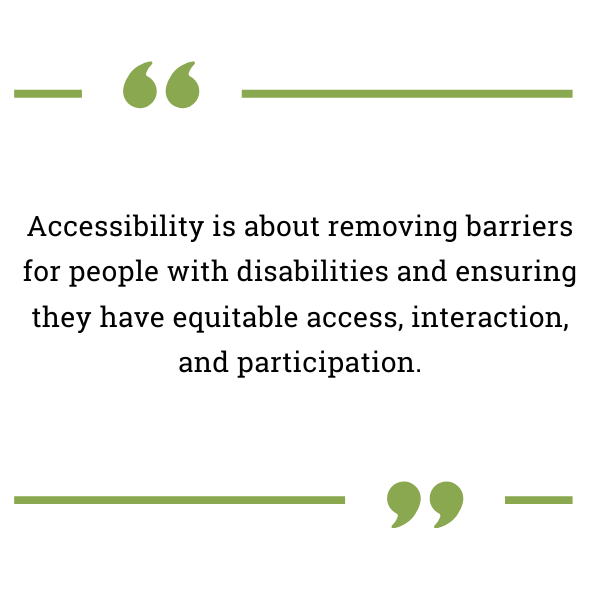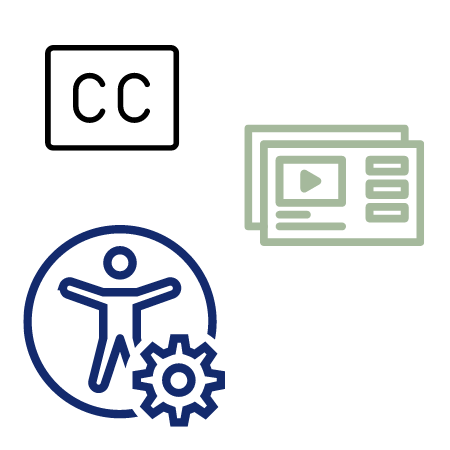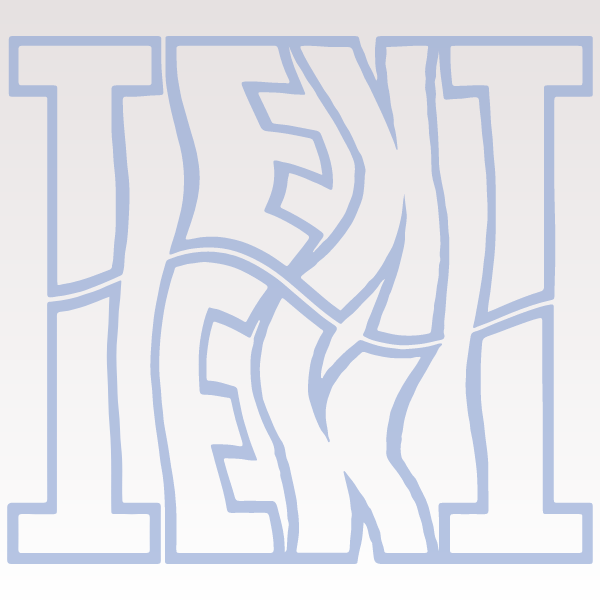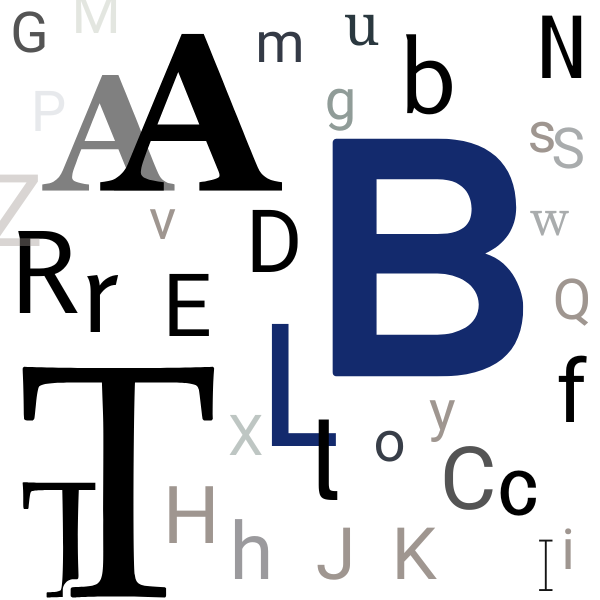Why Not Both?: It’s time to teach accessibly AND teach accessibility!
Published by: WCET | 4/27/2023
Tags: Accessibility, Distance Education, Managing Digital Learning, Online Learning, Student Success
Published by: WCET | 4/27/2023
Tags: Accessibility, Distance Education, Managing Digital Learning, Online Learning, Student Success
This month WCET has focused on accessibility. As you may or may not know, we’ve been undertaking an accessibility review and revision of our entire website and document development practices. We held a WCET Webcast this month to feature the lessons we have learned during this process, which included WCET’s Manager of Digital Design, Rosa Calabrese, our Executive Director, Russ Poulin, and John Northup, the Director of Evaluations with WebAIM, which we have contracted with for our web review. You can watch the recording of the webcast to listen to the discussion and learn from our journey! We’ll continue this work moving forward, and I know our team is excited to continue to build upon this experience. In fact, stay tuned here at WCET Frontiers for a post from Rosa with more details on our website review journey. We will also be releasing additional resources around this topic soon and hosting a WCET Closer Conversation on Improving Access for All Learners.
As we round out the month, we’re thrilled to be joined today by Kate Sonka and Rolando Méndez from Teach Access to discuss the differences between teaching accessibly and teaching accessibility. Next month Teach Access will release a report about the gap in accessibility related skills in the workforce, and today Kate and Rolando share a preview of those results with us. I also really appreciate the ideas for including accessibility in student experiences. Thank you Kate and Rolando!
Enjoy the read and enjoy your day,
Lindsey Downs, WCET
What did you learn about accessibility when you were in school? We are guessing that the answer is probably “nothing” or “very little.” Odds are if you are working in higher education, you have heard the term mentioned a few times. Although accessibility is a legal obligation, that alone should not be the main driver for us to know about it, care about it, or do something about it.

Accessibility is about removing barriers for people with disabilities and ensuring they have equitable access, interaction, and participation. As practitioners and leaders in education, we shouldn’t only be concerned about transferring our disciplinary knowledge and experiences to students, but also ensuring that they are equipped with the concepts and skills needed to be successful in their personal and professional lives. Teaching “accessibly” and teaching accessibility is part of that equation.

The discourse in higher education has mainly been focused on teaching “accessibly.” This involves making sure that our educational materials, technologies, activities, and courses are accessible to students with disabilities. Perhaps you have heard your favorite instructional designer tell you that you need to add captions to your videos, add alternate text to your images, and to start using descriptive hyperlinks. They might even point you to some helpful resources such as websites, apps, standards, and rubrics. Certainly, these practices and resources are very important components of teaching accessibly, but they are only part of what we could and should be doing.
The truth is that accessibility and teaching accessibly are not bound to technologies, checklists, or specific moments in time. They are continuous and collaborative processes that require a lot of learning and unlearning. Yes, the process can sometimes be uncomfortable as it requires us to reflect on – and in some cases, abandon – our frameworks, practices, and language. Hey, it also involves making mistakes and learning from them! But the bottom line is that through this process we become better educators and we help our students become better learners.
Many institutions have been making great efforts to make teaching accessible. However, there is still much work to be done to ensure that students understand what accessibility is and how it informs their disciplines. A study conducted in 2017 by the Partnership on Employment and Accessible Technology (PEAT) revealed a gap in accessibility skills in the tech industry. Two figures from this study worth highlighting are that:
In fall 2022, Teach Access revised the study and distributed it to various industries to capture an understanding of the current state of accessibility skills within the workforce. Spoiler alert! Six years later the accessibility skills gap still exists. The full report and findings will be released in May, during 2023 Global Accessibility Awareness Day (GAAD), but as a sneak peek some preliminary data from this study revealed that:
So, what can institutions do to make sure their students are equipped to enter the workforce with the skills they need? The answer is to teach accessibility.

Teaching accessibility can take many forms. It can be as straightforward as introducing a lesson or activity on accessibility, accessible design, or disability in one of our courses. For example, in a graphic design course we could talk about accessible typographies, layouts, and color contrasts, or in a writing course we could teach our students about plain language and anti-ableist language.
If you are not sure how or where to start, we would recommend perusing the Teach Access Curriculum Repository, a free collection of open educational resources (OER) developed by faculty to support teaching accessibility to students. This repository contains a variety of teaching tools, including syllabi, slide decks, assignment prompts, discussion questions, and quizzes, among other resources. We would also recommend reaching out to people and organizations in the field of accessibility. As you will probably find out, this community is all about collaboration!

Teaching accessibility can start in your classroom, but consider the impact of integrating the teaching of accessibility into the curriculum and more widely across the institution. Some examples of next-level transformations we can make include:
Since Teach Access began in 2016, our work has focused on engaging students and faculty, through our different programs (Study Away, Career Development Series, and Faculty Grants). One of the most important lessons we have learned is that teaching accessibly and teaching accessibility require sustained, intentional, and scalable engagement and support. This is why we have been building our new programs around these principles.
For example, this semester we are piloting the Faculty Fellowship Program in partnership with California State University Northridge and College University of New York. Through this program, we are engaging faculty and staff from across disciplines and institutions in learning about accessibility and inclusiveness, as well as supporting them in the creation of course materials and activities and in the adoption of accessible pedagogical practices. In the Fall, we are planning to pilot two additional programs: the Student Ambassadors Program and the Faculty Pathways. The past couple of months we have been conversing with faculty and students across the country to learn more about their interests, needs, and preferences. These conversations have helped us assess the programs we have been offering, as well as shape the ones that we are building. Hopefully, your efforts and ours will help ensure that the next time someone asks “What did you learn about accessibility when you were in school” question, the room will be full of raised hands.
We are optimistic that this blog post will help spark the interest in some and fuel the passion in others, to push for significant changes in curriculum and pedagogy. These changes will help ensure that products, services, technologies, and events are born accessible.
Executive Director , Teach Access
Director of Education, Teach Access